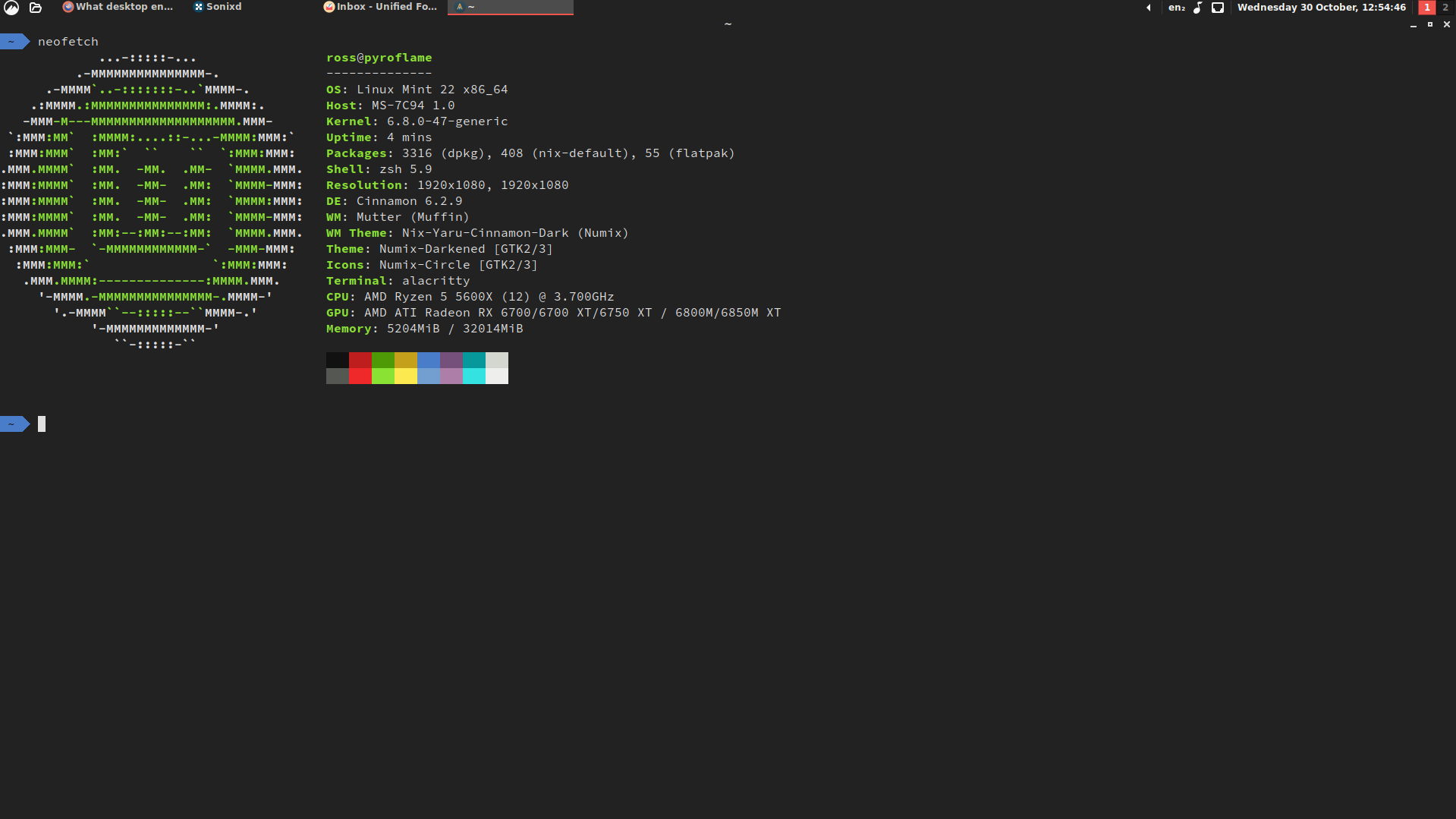

Unless it has changed recently, Docker is not intended to be a security layer as far as I know.
Hello there!
I’m also @savvywolf@furry.engineer , and I have a website at https://www.savagewolf.org .
He/They


Unless it has changed recently, Docker is not intended to be a security layer as far as I know.


As I understand it, the problem that both Nix and Docker try to solve is “How do I bundle and run this application in such a way that its dependencies are explicitly specified and don’t interfere with anything installed on the host system”.
They have different approaches, but I think that goal is the same?


Honestly, since getting into NixOS, I’ve found that much more of an elegant system than Docker or whatever.


If you’re a furry Linux user, you’re only allowed to use desktop backgrounds of Xenia. :P
Assuming you’re serious and I’m not being whoosed, remember that Linux is a tool, not a cause. Many use Linux because they like Linux, not because they want to purge all non-free things from their life.


Remember you can dual boot. You can keep the Windows install around on a separate partition for when you need to use it.
I play Stellaris, Stardew and Slime Rancer on Linux, and they seem to work last I’ve tried.
dd is completely safe.
Only if you have the correct args and device names. Make a backup if you want to do it from the command line and aren’t feeling 100% confident.
When I’ve needed to transfer data over to a new disk, I’ve used gparted from a live usb to copy/paste partitions directly. Once that’s done, you’ll probably need to update /etc/fstab to point to the new drives and run update-grub (assuming you are using grub) to update the bootloader config.


Why do they need information about the hostname? Is it really valuable for them to know how many systems are named daves-pc?


I tried Cosmic and quite liked it. Just waiting for them to add a gnome 2 style window list widget with the window names.


There is, but I use a hipster keyboard layout and they don’t support alternate keyboard layouts yet.


Cinnamon. Desktop environment peaked in the Windows XP/Gnome 2 days and everything else is just change for the shake of change. :C
My only annoyance is lack of Wayland support. Tried out cosmic, but it doesn’t have the Windows XP/Gnome 2 style window list.
Screenshot for anyone interested:



If it turns out to actually be a problem, people can just fork Linux itself.
Oh, neat. Surprised that isn’t added to the default paths though.
It also still does the annoying name.like.this for binary names rather than just using normal names though.
vim
Opinion disregarded.
As an aside: I really wish flatpaks would put symlinks or something in ~/.local/bin so you could just run them without the flatpak run boilerplate.


Storage devices can fail at any time for any reason. Always have a backup.
Fwiw, I think BTRFS is better than ext4 and friends at actually detecting whether a block is corrupted or not.


Huh. Lot of people Russian’ to conclusions in this thread.
Sorry.


As far as I know, none of the major DEs have Windows-style telemetry turned on by default. So ignoring security issues and apps themselves, DEs should roughly be the same on the privacy front.


You can have multiple A records point to the same IP address, yes. Whatever website you’re managing your DNS with should allow you to create multiple subdomains as A/AAAA records. You can also (if you wish) use a wildcard to ensure that all subdomains go to your VPS’s server.
If you want to run multiple HTTP/HTTPS services on the same IP address (as it looks like you want to do), you’ll need to use a reverse proxy like Nginx. It can pattern match on domain names and ensure that traffic for one domain goes to an appropriate port/socket (mastodon.example.com being sent to the mastodon service). It’s not possible for DNS to specify port redirection.
Also, you’ve not mentioned it here, but look into https://letsencrypt.org/ for HTTPS certificates.


Linux Mint tends to be a bit conservative in terms of kernel version (which is what usually determines driver and hardware support), which explains why you had trouble getting hardware to work. I think they’re getting better at it now though.
Under Linux, I find “gparted” to be a good application for looking at and managing partitions.
Mint for my desktop system. It just does exactly what I want it to, has good compatibility with software and Cinnamon is my DE of choice.
NixOS for my server, because being able to use one config repo and format for everything is so nice.